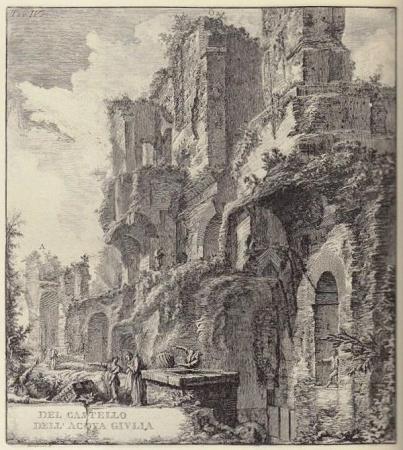Aqua Julia (-33). The Aqua Julia or Aqua Iulia is a Roman aqueduct built in 33 BC by Agrippa. It was repaired and expanded by Augustus from 11-4 BC. The springs of the Aqua Iulia are situated approximately a half-mile north of the abbey of Grottaferrata. Frontinus stated that the springs were two miles to the right of the twelfth mile of the via Latina. The length of the Aqua Iulia was reported as 15,426 1/2 paces. The water supply was estimated to be 1206 quinariae, or 48,000 m 3 during a 24-hour period. Several cippi are known, all dated from the time of Augustus. No. 302 has been found near the springs, and 281 not far south of the abbey; others have come to light at Capannelle near the seventh mile of the via Latina, before the channel begins to run above ground upon the arches of the Aqua Marcia. The aforementioned group has been dated back to the 14-11 BC restoration. However, another cippus has been located, north of the abbey, bearing the number 2. It dates from 14 BC, and is, it is presumed, the result of another restoration by Augustus, of which there is no record. The Aqua Iulia flows above the Aqua Tepula, upon the arches of the Aqua Marcia. The main channel leads to its terminal castellum. In addition to this, some arches still remain in the Piazza Guglielmo Pepe, which suggests that a branch ran to the Nymphaeum Alexandri. The identification of this branch as being part of the Aqua Iulia is dependent on the specus that runs upon it being only 0.289m below the bottom of the specus of the aqueduct at Porta Maggiore, which is at 63.739 m above sea-level. However, in Livellazione, the level of the bottom of the Aqua Iulia is located just outside Porta Maggiore, and its height is given as 57.38 above sea-level. If this is accurate, the branch must have originated from the Aqua Claudia or the Anio Novus. Frontinus states that, prior to the construction of the Aqua Claudia, the Marcia and Iulia supplied the Caelian and the Aventine. In Frontinus's own lifetime, a section of the Marcia was diverted at Spes Vetus and was delivered to the reservoirs of the former hill. The water supply from the springs of the Aqua Iulia is now brought into Rome by the channel called the Marrana Mariana, which was constructed by Pope Calixtus II in 1122. However, this has been utilised for mills and for irrigation.
more...





